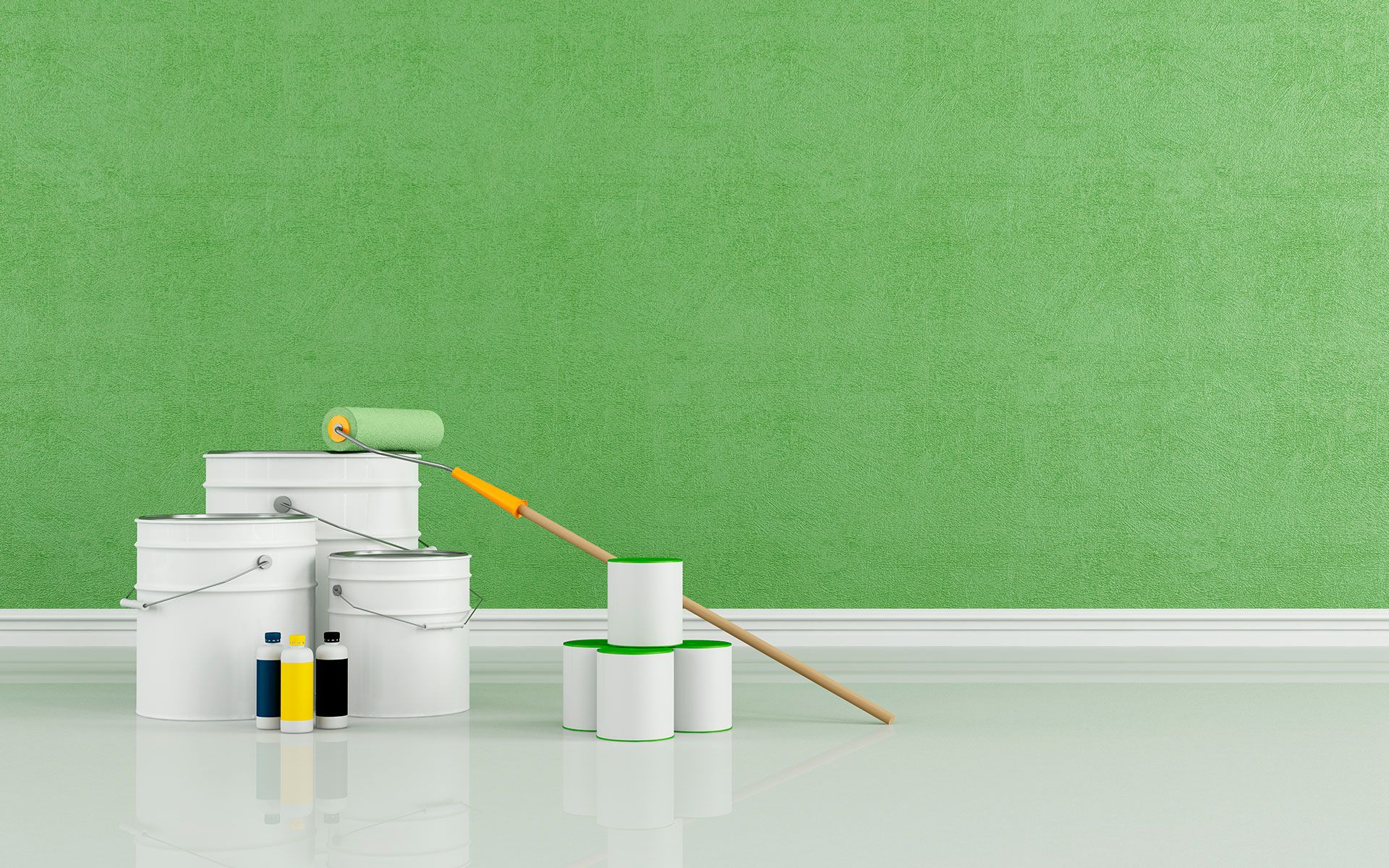OIL AND WATER DON’T MIX
Never apply latex, water-based paint on an oil finish and vice versa. If you’re not sure which type of paint is already on a surface, apply some rubbing alcohol to a dry white cloth and rub it on the surface or wall. If the paint softens and transfers to the cloth, it is water-based latex.
ECO-FRIENDLY PAINT
Some types of paint can release small amounts of toxic gas into the air for years after it has been applied. Choose paint with low VOC’s - these are often identified with a green seal. Ask Feria C & M Professional Painters LLC
about “green painting” products for your home or business
Proper Preparation Prevents Poor Performance
CLEAN:
Remember to clean walls, ceilings and all surfaces with a simple solution of TSP and water before painting. Rinse lightly and allow to dry overnight. Dust and brush baseboards, trim and crown moldings before taping. Sand all surfaces (especially if textured) for best results.
TAPE AND FLOOR PROTECTION:
Overlap tape at the edges to avoid seepage and seal tightly. Drop cloths or old sheets are best for protecting floors from paint splatter. Plastic sheets can get slippery and cause hazards. As an alternative to taping, use a good quality painter’s edger to save time.
PAINTBRUSHES:
Use nylon and synthetic brushes for latex paint. Oil-based paint performs better with natural bristles like ox hair. Clean latex paint from brushes immediately after use with soap and water. Oil based paint brushes require paint thinner. Wrap brushes in plastic, seal with a rubber band and hang upside down to maintain shape.
FILL:
Use spackle to fill in any holes and cracks prior to painting using a wide, flat blade tool. Let dry, sand until smooth and apply primer to each spot.
REMOVE:
Tape screws to the base covers when removing electrical outlet covers for a much neater job. Apply tape over the outlet switch.
ALLOW FOR SUFFICIENT DRYING TIME:
Wait at least 24 hours before bringing furniture back into a freshly painted room. Allow 30 days before washing.
QUICK TIP:
If you take a break while painting, cover rollers in plastic wrap and refrigerate so they won’t dry up.

